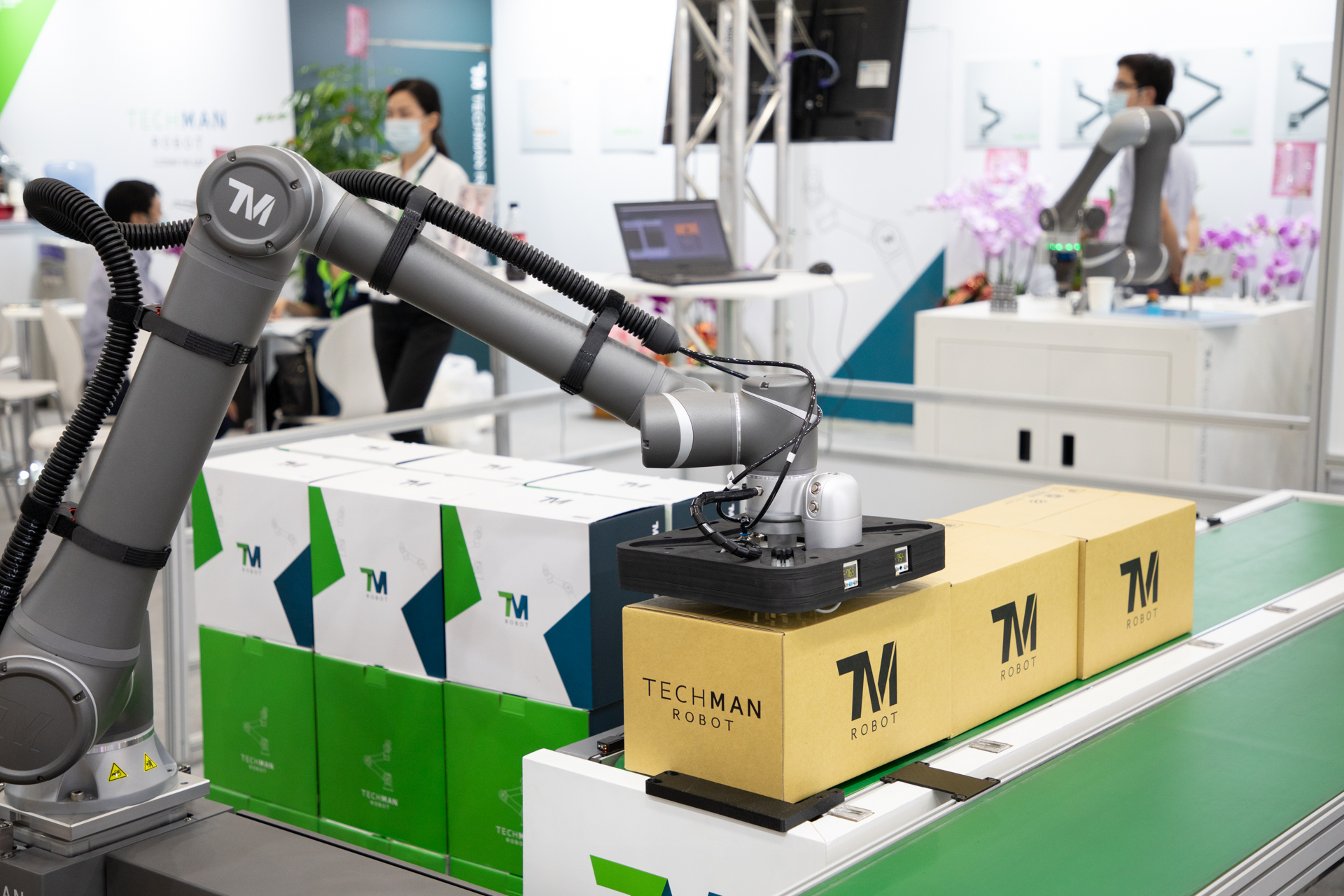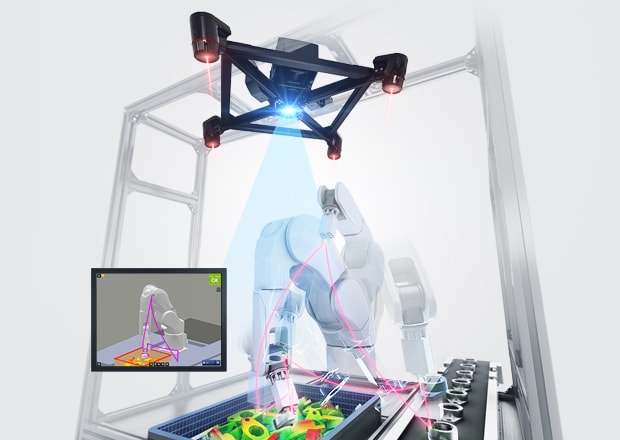What Every Manufacturer Should Know About fibre testing equipment
Why Robotic Vision Is Vital for Advancing Precision in Manufacturing Industries
Robotic vision has emerged as a vital element in modern manufacturing. It encourages equipments to analyze visual information with exceptional precision. This capability enhances quality assurance and decreases the likelihood of problems. As industries undertaking for greater performance, recognizing the complexities of robotic vision becomes vital. The interplay in between innovation and functional processes raises important questions concerning future developments and their effects. What lies ahead for accuracy in production?
Recognizing Robotic Vision Modern Technology

Enhancing Quality Control With Robotic Vision

Improving Functional Efficiency With Automation

Automating production processes via robotic vision considerably improves manufacturing rate, enabling for quicker turnaround times. This technology also decreases mistake rates, guaranteeing greater precision in operations. Furthermore, structured source administration is attained, leading to extra effective usage of products and labor.
Boosted Production Speed
While the assimilation of robotic vision in production has changed operational procedures, its most considerable advantage hinges on improved production speed. By employing innovative picture processing and real-time information analysis, robotic vision systems can quickly identify and react to manufacturing needs. This accelerated responsiveness eliminates delays commonly linked with hands-on examination and decision-making procedures. Additionally, these systems can run constantly without fatigue, making certain that manufacturing lines preserve high throughput. The capability to find and resolve concerns instantaneously further simplifies process, allowing suppliers to enhance outcome levels (optical fibre diameter analyser). Companies profit from decreased cycle times and increased productivity, positioning them competitively in the market. Improved manufacturing rate, driven by robotic vision technology, inevitably brings about improved functional effectiveness throughout the production landscape
Minimized Error Rates
As production rate rises, maintaining accuracy comes to be paramount in manufacturing processes. Robotic vision systems significantly add to decreased mistake prices by providing precise dimensions and real-time assessments. These innovative systems use high-resolution cams and advanced formulas to find defects, imbalances, or incongruities in items during setting up. By automating quality assurance, manufacturers can swiftly recognize and correct problems that human assessors could ignore. This not only lessens waste yet also enhances general item top quality. Furthermore, the integration of robotic vision decreases variability in production, guaranteeing that each item fulfills rigorous specifications. Producers experience less expensive recalls and raised client contentment, inevitably leading to a more effective and rewarding functional version.
Streamlined Resource Monitoring
Effective resource monitoring is critical for making the most of operational performance in manufacturing, especially when integrated with robotic vision systems. These systems boost the capacity to check and allocate sources precisely, guaranteeing that products and labor are made use of efficiently. By employing sophisticated visual modern technologies, manufacturers can determine inadequacies in actual time, decreasing waste and enhancing manufacturing timelines. On top of that, robotic vision enables accurate stock tracking, lessening the risk of overstocking or stockouts. Automation of these procedures not just enhances procedures however likewise enables human workers to focus on higher-value tasks, fostering innovation and productivity. Because of this, companies can accomplish substantial price savings while preserving premium standards, inevitably placing themselves a lot more competitively in the market.

Decreasing Human Error in Production Processes
Human error continues to be a substantial obstacle in making processes, usually leading to expensive blunders and ineffectiveness. In environments where precision is extremely important, even small lapses in judgment can lead to faulty products or hold-ups in production routines. Robotic vision systems can alleviate these risks by giving exact and consistent tracking of manufacturing procedures. By automating jobs such as top quality control and production line inspections, these systems lower the reliance on human oversight, therefore minimizing the capacity for errors.Moreover, robotic vision technology improves data precision, enabling real-time changes based on visual responses. This capability assures that any type of variances from developed requirements are immediately recognized and dealt with, better lowering the chance of errors. As makers increasingly take on robotic vision, they can anticipate not only to enhance precision and effectiveness however additionally to cultivate a more secure working setting by reducing the pressure on human operators.
The Role of Artificial Intelligence in Robotic Vision
Artificial knowledge markedly enhances robotic vision by utilizing artificial intelligence formulas and progressed photo handling strategies. These modern technologies enable robotics to analyze aesthetic information with greater precision, enhancing both effectiveness and accuracy in producing setups. Consequently, the combination of AI right into robotic vision systems stands for a crucial advancement in automation.
Artificial Intelligence Algorithms
Maker knowing algorithms are transforming robotic vision in manufacturing by allowing makers to interpret and assess aesthetic check my blog information with remarkable precision. These formulas enable robotics to learn from large datasets, adjusting to brand-new circumstances and improving their performance over time. By leveraging strategies such as monitored and without supervision knowing, robotic systems can recognize patterns and abnormalities in real-time, which improves high quality control and reduces waste. In addition, artificial intelligence helps with far better decision-making procedures, permitting robotics to maximize their actions based on learned experiences. As these formulas progress, they encourage robotic vision systems to do significantly complex jobs, ultimately driving effectiveness and precision in making procedures. The integration of device discovering as a result plays a critical duty in the innovation of robotic vision technology.
Picture Processing Strategies
Enhancing the capacities of robotic vision, picture handling strategies play a crucial role in making it possible for systems to translate aesthetic details successfully. These methods include formulas that boost image quality, remove pertinent features, and identify patterns within aesthetic data. By utilizing approaches such as edge detection, segmentation, and object acknowledgment, robotic systems can determine and categorize components with amazing accuracy. The integration of fabricated knowledge additionally enhances these strategies, enabling flexible understanding and boosted decision-making in dynamic environments. Because of this, robotic vision systems can not only identify issues yet likewise optimize procedures, resulting in enhanced efficiency and Full Article accuracy in production. As a result, the continuous development of photo handling strategies stays essential to the evolution of robotic vision in commercial applications.
Future Patterns in Robotic Vision for Production Industries
As markets increasingly focus on performance and accuracy, the development of robotic vision modern technology is readied to change producing procedures substantially. Future patterns show significant developments in expert system and machine discovering assimilation within robotic vision systems. These renovations will certainly boost real-time decision-making capabilities, allowing robots to adapt to varying problems autonomously. The fostering of 3D vision systems is expected to raise, offering even more accurate spatial awareness and object recognition. Partnerships between robotics and human employees may additionally advance, with advanced vision systems assisting in much safer and much more effective communications. In addition, making use of edge computer will likely make it possible for faster data processing, minimizing latency and improving operational responsiveness. As these patterns i loved this unfold, the manufacturing market stands to take advantage of boosted quality assurance, decreased waste, and streamlined operations, ultimately resulting in boosted competitiveness in a swiftly transforming market.
Frequently Asked Concerns
How Does Robotic Vision Differ From Traditional Device Vision Systems?
Robotic vision includes advanced algorithms and real-time handling, making it possible for dynamic interpretation and communication with atmospheres. In comparison, conventional machine vision mainly focuses on fixed picture capture and evaluation, restricting flexibility and responsiveness in complicated production situations.
What Industries Advantage Many From Robotic Vision Modern Technology?
Various sectors benefit considerably from robotic vision innovation, including automotive, electronics, and food handling. These industries utilize enhanced accuracy, effectiveness, and flexibility, eventually enhancing production quality and reducing functional expenses with advanced automation remedies.
Can Robotic Vision Equipments Be Integrated With Existing Production Devices?
Robotic vision systems can undoubtedly be integrated with existing production tools. This assimilation boosts operational efficiency, enabling for smooth collaboration in between conventional equipment and advanced visual modern technology, inevitably boosting overall production processes and results.
What Are the Expenses Connected With Implementing Robotic Vision Solutions?
The prices connected with carrying out robotic vision remedies differ significantly, influenced by factors such as system complexity, needed software program, hardware elements, assimilation with current machinery, and ongoing maintenance costs, ultimately influencing overall return on financial investment.
Exactly how Do Upkeep and Support for Robotic Vision Solutions Job?
Upkeep and assistance for robotic vision systems entail routine software program updates, equipment inspections, and troubleshooting. optical fibre diameter analyser. Vendors generally use service arrangements, making sure prompt aid and lessening downtime to preserve peak performance and reliability in industrial applications